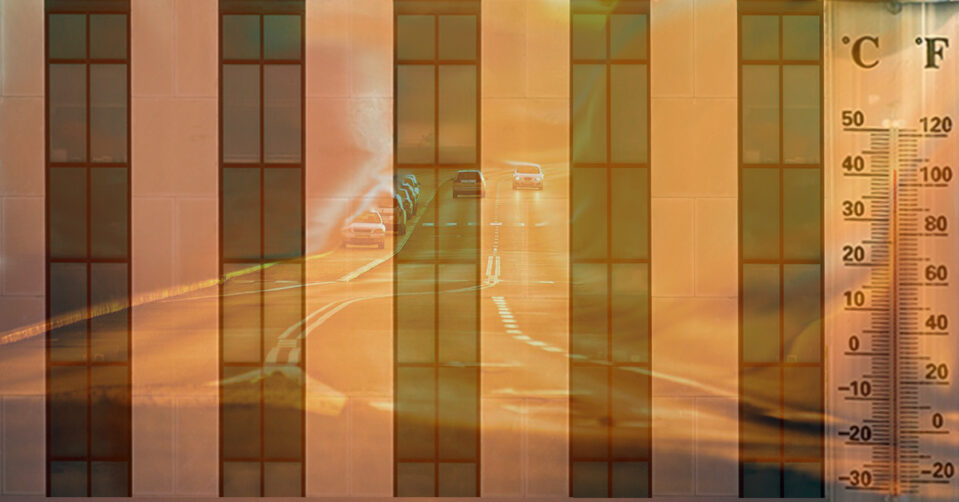It’s Gettin’ Hot in Here: Extreme Heat and Urban Heat Islands
Mohamed Oday (Former Operations Manager) / August 11, 2022

What do you think of when you hear the word ‘island’? Maybe pristine beaches, the smell of the salty sea breeze, ice cold beverages, azure blue skies? Whatever it may be, it probably doesn’t conjure up the image of heat islands, often affecting our most vulnerable communities.
Summer 2022 has again brought extreme heat waves where temperature records were broken. Extreme heat refers to above average high temperatures over the course of multiple days. This concerning phenomena has only worsened because of the current climate crisis raising already dangerously high temperatures to hazardous levels for many people, but especially for low-income and POC (people of color) communities who tend to live in urbanized areas that lack greenery. Natural landscapes that contain greenery and water bodies function as cooling agents in the surrounding landscape through means of shade coverage and water evaporation. An urbanized environment, however, is filled with infrastructure and materials that absorb far more heat and radiate it towards their surrounding landscape, significantly increasing the surface temperature by several degrees. As a result, the term ‘heat islands’ emerged to describe these isolated urban environments where prolonged heat waves compound with other environmental factors, negatively affecting these communities.
Heat islands create a multitude of problems including but not limited to health problems, increased energy consumption and related costs, and various ecological issues. According to the Environmental Protection Agency, members of the communities that live in heat islands tend to suffer from heat-related illnesses like: heat strokes, respiratory issues, cramps, and—in severe cases—death. It isn’t a simple solution to seek refuge indoors and blast the A/C either. Many living in heat islands have low-income status and tend to reside in energy inefficient buildings that cost more to cool with air conditioning units. Even if air conditioning units and other cooling systems are used, the high temperatures from the heat islands increase energy consumption significantly. One study indicates that heat islands increase energy consumption for cooling by anywhere from 10-120%. With the increased energy consumption in these heat islands, more greenhouse gas emissions are released into the atmosphere which exacerbates the already worsening climate crisis. Besides worsening climate change conditions, heat islands have been shown to also impact the weather by changing air circulation patterns causing rain to develop in different areas than normal.
Many are working on solutions to this growing problem. WE ACT for Environmental Justice recently compiled a number of helpful recommendations relevant to state and local policymakers in a report. In January, New York’s Attorney General Letitia James filed comments to the Occupational Safety and Health Administration (OSHA) calling for workplace heat standards to protect disadvantaged workers from extreme heat conditions. The Biden-Harris administration expanded on its earlier interagency initiatives focused on heat inequities through new executive actions focused on energy costs and Federal Emergency Management Agency funding. The many needs in this area are likely to demand attention for some time to come.
This page was updated on March 5, 2024 to better meet our accessibility standards. To see the page as it was initially published, click here.
